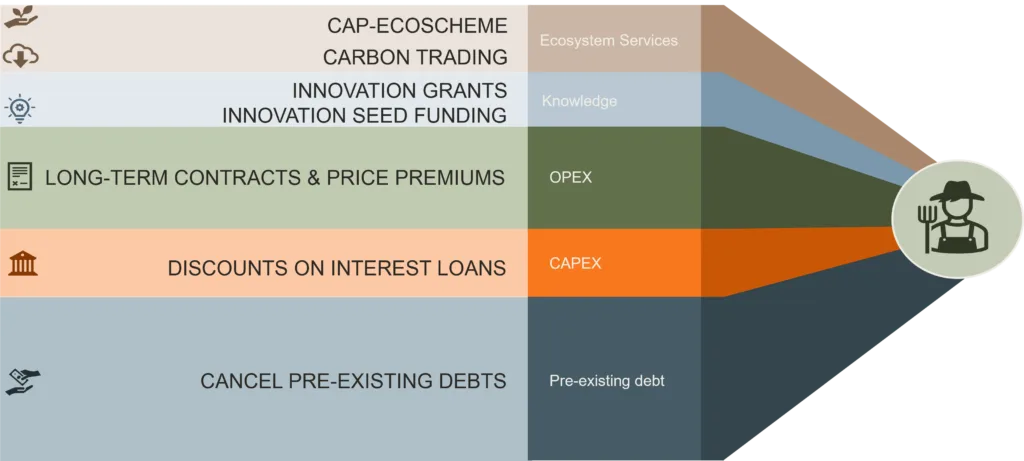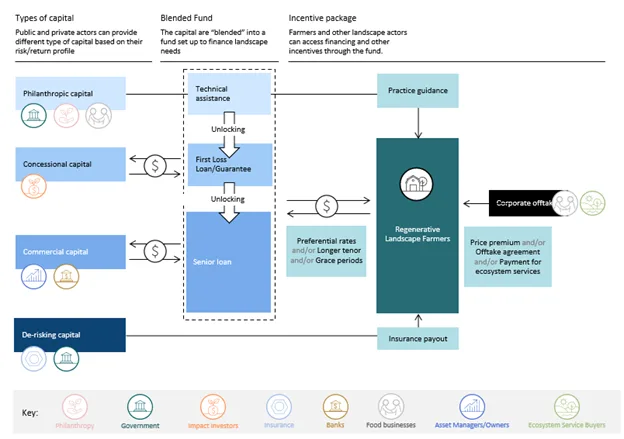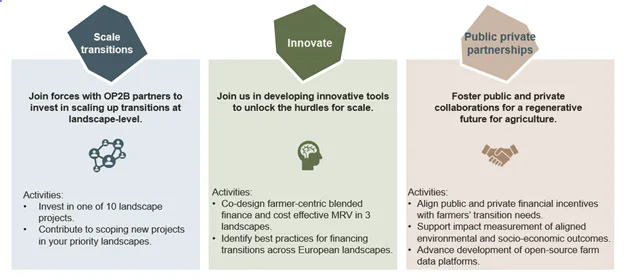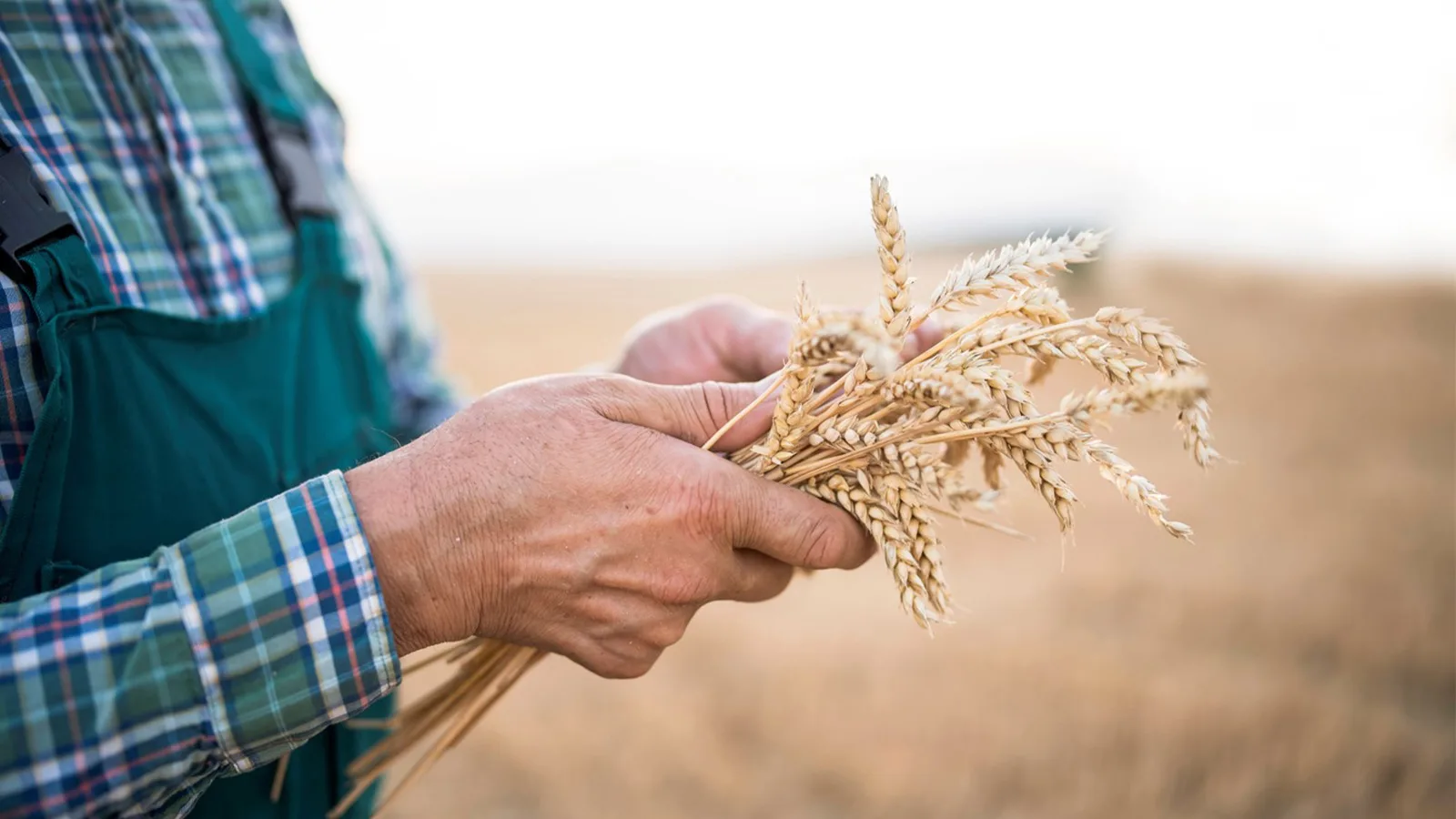The OP2B coalition convened multi-stakeholder roundtables with agriculture value chain actors, public and private financers, landscapes initiatives, and farmers from May to November 2024. Through the process, stakeholders contributed to a collective vision for scaling regenerative agriculture transitions in Europe through a focus on innovative finance, harmonized metrics and MRV and advocacy. This article reflects key learnings on the role of innovative finance.
Existing financial incentives do not meet farmers’ needs
There is a positive business case for farmers to transition to regenerative agriculture in the long term. Various research both in Europe and the US shows that in the first couple of years of transition farmers are likely to see a decline in profits due to temporary increased operational costs, such as the cost of seeds and new machinery. However, once farmers reach a relatively steady state of regenerative practices, they can reach between 70% and 120% higher profitability and a return on investment of 15% to 25% over 10 years according to analysis by BCG. With the right transition-supports in place to manage the complexity and risk of transition for farmers, this positive long-term outlook lays the groundwork for large-scale transitions.
According to analysis by Anthesis, roughly €24 billion of public and private funds are available to support regenerative agriculture transitions in Europe. However, transition risks and costs still sit mostly on the shoulders of farmers because funding and incentives rarely come together at the same time in the same region to address farmers’ financing needs in transition comprehensively. An analysisfrom the European Investment Bank estimates that, in 2020, the financing gap for agriculture in the EU was between €19.8 and €46.6 billion and the gap for the agri-food industry was more than €12.8 billion.
Integrated financial packages are key to accelerating transitions
To finance and accelerate the transition, Europe needs more comprehensive and holistic financial support mechanisms that can scale to reach many farmers. The complexity of the current mix of subsidies, loans, price premiums and insurances creates a significant barrier to the widespread adoption. A simplified financial landscape with integrated public-private financial packages is essential to support farmers in transitions to regenerative agriculture goals.
Figure 1, the farmer financing stack, is an example of common financing needs of farmers in a transition period that must be addressed together. Common financing needs include new capital expenditures (CAPEX), shifted operational expenditures (OPEX), innovation and local knowledge development and new business models for ecosystem services. Public-private collaboration is needed to coordinate support to farmers, leveraging investments from the public and private actors.

To make the business case for transition clear and actionable for farmers, stakeholders such as corporates, banks, insurers, government, and more can contribute to regional incentive packages. Many transition-facilitating projects already do this work in Europe, led by initiatives including Commonland, The EIT Food Regenerative Innovation Portfolio, Landscape Enterprise Networks (LENs), Livelihoods Funds, the Future Fit Dairy Initiative (FFDI), and Re-Ge-NL. The regional structure clarifies the contributions of involved parties as part of an integrated package of transition supports, resulting in a clear and compelling case for farmers to take up regenerative agriculture.
Blended finance as an instrument to support farmers
Blended finance at a regional level provides a structure through which the various stakeholders in a region’s transition can co-invest together while also reaching their individual investment objectives. The blended finance model below outlines the contributions of food and agriculture stakeholders to a package of financing supports designed to address the needs of farmers in a specific production landscape. In the model, on-the-ground technical support for farmers serves as a starting point of effective practice changes, ensuring effective transitions over the long term.

The capital to support farmers with agronomic advisory is typically provided by philanthropic capital. With concessional finance in place to de-risk potential early losses in transition, blended finance models make investments into a landscape’s transition appealing to private investors. With these two funding sources in place, commercial capital providers can offer farmers lower interest rates, longer tenor and/or grace periods on loan repayment.
All of these blended or coordinated funds are then re-enforced by insurance and re-insurance programs catered to the regional risks associated with regenerative agriculture transitions and incentives from corporate off-takers, who offer transitioning farmers additional incentives such as price premiums, long-term off-take agreements and payments for ecosystem services.
Further, the financial structuring work that is done in preparing a blended finance model lifts much of the administrative burden of financing from farmers, who are presented with the resulting package of incentive and supports.
Activating landscape partnerships for impact on the ground
Landscape collaborations sit at the core of agricultural transitions. OP2B aims to serve as an activation hub for collaborations across landscape initiatives, farmers, industry, policy and finance to scale landscape projects. In 2025, this will take shape through scaling transitions, innovating, and creating public private partnerships.

The OP2B coalition has learned through its 2024 work that meeting farmers’ transition needs will rely on coordinating and collaborating toward common sustainability and nature goals to overcome financial barriers transition as well as collaboration for harmonized metrics and MRV and advocacy.
The OP2B coalition calls on public and private agriculture and food stakeholders to join our growing cohort of value chain, finance, local entities, public bodies and farmers to build transition pathways to scale regenerative agriculture in Europe. Collective action allows stakeholders to pool resources, share knowledge and leverage collective influence to meaningfully support farmers in transitions. Join us in building a better future for agriculture in Europe.
Reach out to Lucy Schroder at schroder@wbcsd.org to learn more.
Outline

